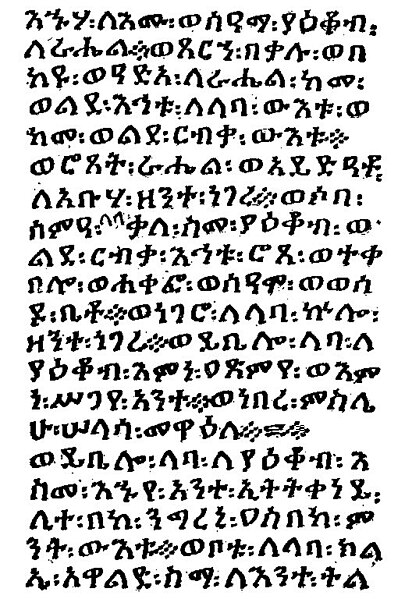Geʽez is an ancient South Semitic language. The language originates from what is now northern Ethiopia and Eritrea.
Ezana stone, written in Ge'ez explaining his conquests and accomplishments
Genesis 29.11–16 in Geʽez
Example of Geʽez taken from a 15th-century Ethiopian Coptic prayer book
The Ezana Stone, engraved from AD 330 to 356, is written in ancient Ge'ez, Sabaean and Greek.
Ethiopia, officially the Federal Democratic Republic of Ethiopia, is a landlocked country located in the Horn of Africa region of East Africa. It shares borders with Eritrea to the north, Djibouti to the northeast, Somalia to the Northeast, East and Southeast, Kenya to the South, South Sudan to the West, and Sudan to the Northwest. Ethiopia covers a land area of 1,112,000 square kilometres. As of 2023, it is home to around 128 million inhabitants, making it the 13th-most populous country in the world, the 2nd-most populous in Africa after Nigeria, and the most populated landlocked country on Earth. The national capital and largest city, Addis Ababa, lies several kilometres west of the East African Rift that splits the country into the African and Somali tectonic plates.
A Homo sapiens idaltu hominid skull
Aksumite currency of the Aksumite king Endubis, 227–35, at the British Museum.
Fasil Ghebbi, one of the key castles of the Gondarine period.
Emperor Tewodros II (r. 1855–1868) brought an end to Zemene Mesafint








